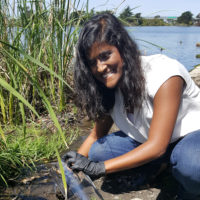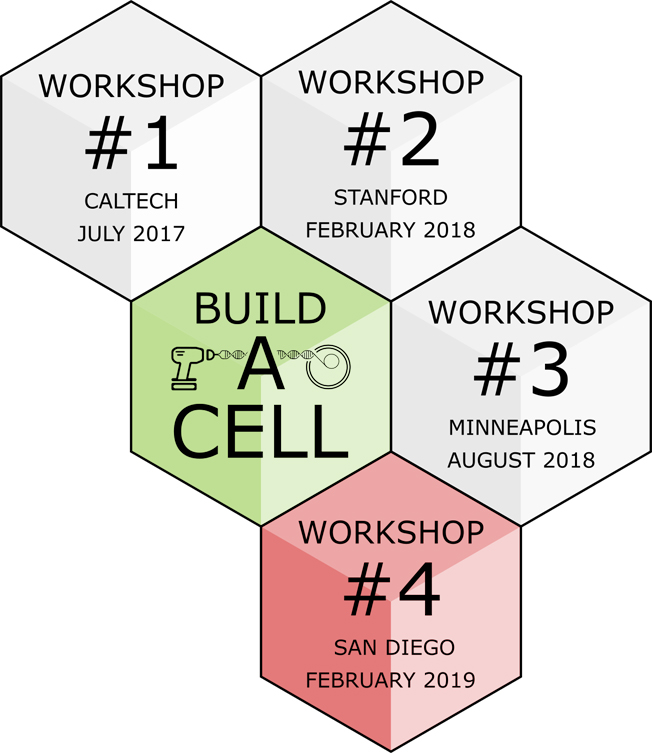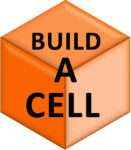Kate gave seminar at Foundations Of Nanoscience: Self-Assembled Architectures And Devices (Fnano19).
Breakthrough Discuss
Kate, Aaron, Joe, Tanner, Judee and Wakana participated in 2019 Breakthrough Discuss meeting.
Theodore Christoforidis

Contact: christot@umn.edu
Postdoc, expert in microfluidics.
Orion Venero

Orion joined the Adamala lab in early 2019; since then, they have focused on the development of tools for synthetic cell engineering, rational RNA design, and using those synthetic biology techniques to elucidate viroid and plastid evolution. Orion joined the BMBB department as a PhD student in 2022.
Judee Sharon

Judee received her B.S. in Microbial Biology from the University of California, Berkeley in 2014. Although she did do research in her undergraduate years, she didn’t find her true interest in environmental microbiology and its applications until she began researching at the U.S. Department of Agriculture and start-up companies like Pivot Bio and Wild Earth. In 2018, she made the move to the University of Minnesota’s graduate program in Biochemistry, Molecular Biology, and Biophysics where she joined the Adamala-Engelhart Lab. She is interested in furthering the functionality of synthetic cells for use in environmental biotechnology applications. Likewise, she would like to use synthetic cell mechanisms to consider (or reconsider) the origins of life on Earth or potentially in extraterrestrial systems. When she’s not in lab, she likes to read, watch The Office, backpack, and drink beer.
Contact: sharo112@umn.edu
New publication

Sivan Kaminski Strauss, (…) Katarzyna P. Adamala, (…), Orna Dahan, Yitzhak Pilpel;
Plos Biology, doi.org/10.1371/journal.pbio.3000182;
local copy
publisher website link
Wakana Sato

Wakana received her B.S. in Agriculture at Hokkaido University, Japan in 2018. She began her research career as an undergraduate under Dr.Takasuka, studying biomass-degrading enzymes, and Dr. Kato, studying the discovery of bioactive natural compounds.
In 2018, Wakana started graduate school at the University of Minnesota, and joined Dr. Kate Adamala’s lab. She is interested in enzyme engineering for natural product synthesis and gene-based tool development for biocomputer.
Contact: sato0055@umn.edu
Build-a-Cell Workshop #4
learning
Learning resources
The HTGAA course is based on the classic Fab-Lab “Hot to Make Almost Anything” fabrication class.
BioAcademy is the best resource to learn basisc of bioengineering, including specific applications of most cutting edge techniques. We run a synthetic cell module, including overwiew of the field of synthetic life and examples of synthetic cell based tools for biological engineering.
Excellent resource for beginning and advanced DIY biological engineers, biospaces and self-taught biohackers, as well as interesting supplement for anyone studying basics of modern biological engineering.
buildacell
Build-a-Cell
Build-a-Cell is an international community of scientists and policymakers working on building synthetic cells. We facilitate collaborations between groups in different areas of synthetic cell research, we engage with scientists in other disciplines to promote use of synthetic cell tools, and we provide information for the general public.
Our lab participated in every one of the bi-annual Build-a-Cell workshops, and we are actively pursuing collaborations with many Build-a-Cell members.
Kate Adamala is the co-founder and leader of Build-a-Cell.
STAT magazine published nice overview of efforts to build artificial life, From chemicals to life: Scientists try to build cells from scratch.
Details, including list of member labs, working groups, workshops and all resources can be found at www.buildacell.org.
DIY Bio
The HTGAA course is based on the classic Fab-Lab “Hot to Make Almost Anything” fabrication class.
BioAcademy is the best resource to learn basisc of bioengineering, including specific applications of most cutting edge techniques. We run a synthetic cell module, including overwiew of the field of synthetic life and examples of synthetic cell based tools for biological engineering.
Excellent resource for beginning and advanced DIY biological engineers, biospaces and self-taught biohackers, as well as interesting supplement for anyone studying basics of modern biological engineering.

